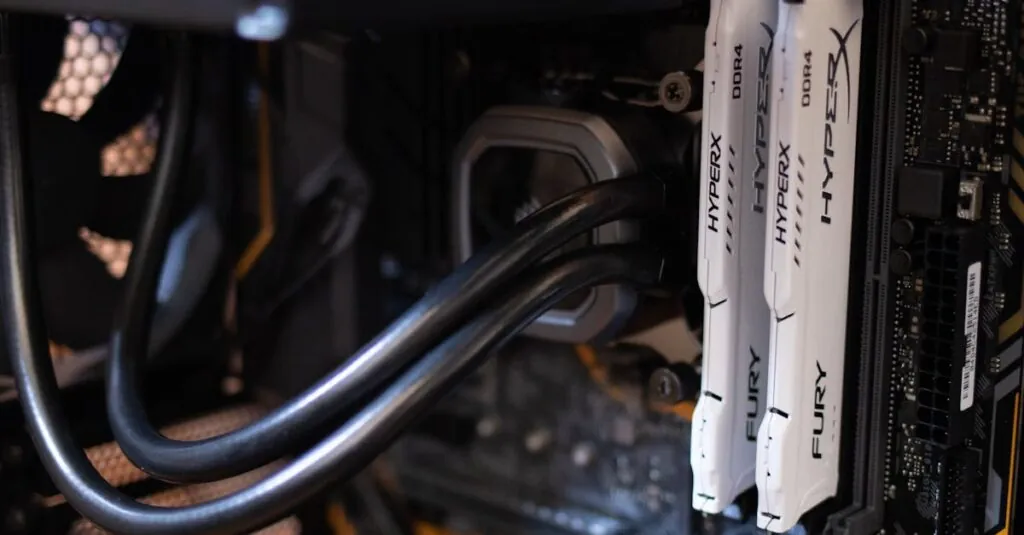Table of Contents
ToggleIn a world where buffering feels like a form of medieval torture, dual-router configuration might just be your knight in shining armor. Imagine cruising through your favorite streaming services without the dreaded spinning wheel of doom. By harnessing the power of two routers, you can create a seamless network that keeps everyone connected—and happy.
Overview of Dual-Router Configuration
Dual-router configuration improves network efficiency and eliminates buffering during streaming. Using two routers allows for load balancing, distributing internet traffic effectively across devices. Increased bandwidth leads to a smoother streaming experience.
Devices benefit from enhanced coverage and signal strength due to the strategic placement of routers in different areas. One router could handle activities such as gaming, while the other manages video streaming. This separation optimizes performance for various tasks, ensuring a reliable connection.
Configuration simplicity makes it accessible to everyday users. Users can connect one router to their primary internet source while the second router extends the network’s reach. Many modern routers support features like mesh networking, further enhancing coverage.
Network security also receives a boost with dual-router setups. Personal devices connect to one network, while guest devices link to a separate network, minimizing security risks. This segmentation protects sensitive information from unauthorized access.
Users experience benefits like better overall network management and improved reliability. Monitoring network performance becomes easier with dual routers, allowing for quick identification of connection issues. Analyzing traffic patterns can lead to further optimization.
While implementing a dual-router configuration may require an initial setup investment, the long-term advantages outweigh the costs. Upgrading network infrastructure significantly enhances streaming quality and user satisfaction. It serves as a practical solution for those facing consistent buffering problems.
Benefits of Dual-Router Configuration
Implementing a dual-router configuration offers multiple advantages that enhance overall network experience and security.
Improved Network Performance
Improved network performance ranks as a significant benefit of dual-router setups. Distributing internet traffic across two routers enhances bandwidth, leading to less congestion. A single router often struggles to manage high demand from multiple devices. With a second router, one can dedicate resources to activities like gaming, while the other focuses on streaming, ensuring smoother playback and faster response times. Load balancing becomes easier, as the routers work independently to serve different devices, reducing buffering. Users experience a more seamless network experience and increased reliability when streaming content or engaging in online gaming.
Enhanced Security Measures
Enhanced security measures represent another crucial advantage. A dual-router setup allows users to segregate their home network from guest connections, minimizing risks associated with unauthorized access. One router can serve personal and sensitive devices, while a second one can limit guest access to general internet browsing only. Such separation fosters a more secure digital environment. Moreover, advanced security protocols can be applied to the primary network, strengthening protection against external threats. This configuration simplifies monitoring and managing device connections, allowing users to secure their data with greater confidence.
Setting Up a Dual-Router Configuration
Setting up a dual-router configuration enhances network performance and improves user experience during streaming and gaming. This configuration requires specific equipment and straightforward steps for successful implementation.
Required Equipment
Dual-router configuration requires two routers, an internet connection, Ethernet cables, and a computer or mobile device. Both routers need to support the same firmware for compatibility. A primary router connects directly to the internet source. The second router extends network access and offers additional bandwidth for connected devices. One may also consider a powerline adapter if wiring limitations exist, providing flexibility in router placement.
Steps for Configuration
Start by connecting the primary router to the internet source using an Ethernet cable. Next, connect the second router to the primary router via another Ethernet cable, using the WAN port on the second router. Access the configuration page of the second router through a web browser, typically by entering its IP address. Disable the DHCP server on the second router to avoid IP conflicts between the two devices. Set the second router to a static IP address within the primary router’s range, ensuring it integrates seamlessly. Save changes and reboot both routers to finalize the setup, allowing optimized performance for multiple tasks.
Troubleshooting Common Issues
Common issues can arise in dual-router configurations. Identifying and resolving these problems quickly ensures a smoother network experience.
Connection Problems
Connection issues often stem from misconfigured settings. First, check that both routers are connected properly and powered on. Verify the Ethernet cables used; damaged cables can cause intermittent connections. Ensure that the second router’s IP address does not conflict with other devices. Disable DHCP on the secondary router to prevent IP address conflicts. Additionally, verify that both routers are on the same network mode, whether 2.4 GHz or 5 GHz, to maintain compatibility. If connectivity problems persist, reboot both routers and monitor the connection stability.
Performance Issues
Performance issues can disrupt streaming and online gaming. Start by checking bandwidth allocation; if too many devices use the same router, it may experience congestion. Monitor simultaneous connections and consider upgrading the primary router if necessary. Adjust Quality of Service (QoS) settings on the routers to prioritize traffic for specific applications. Ensure the firmware of both routers is up to date, as updates can enhance performance and security. Lastly, review signal strength between the routers; repositioning them may improve coverage and minimize dead zones, leading to a better overall experience.
Conclusion
Adopting a dual-router configuration can significantly enhance streaming experiences by reducing buffering and improving network performance. This setup not only optimizes bandwidth but also allows for better management of internet traffic across devices. With straightforward installation and the added benefit of improved security, users can enjoy a reliable and efficient network tailored to their needs.
Investing time in this configuration pays off in the long run. Enhanced streaming quality and user satisfaction are just a few advantages that come with a well-implemented dual-router system. As internet demands continue to grow, this solution stands out as a smart choice for anyone looking to elevate their online experience.





